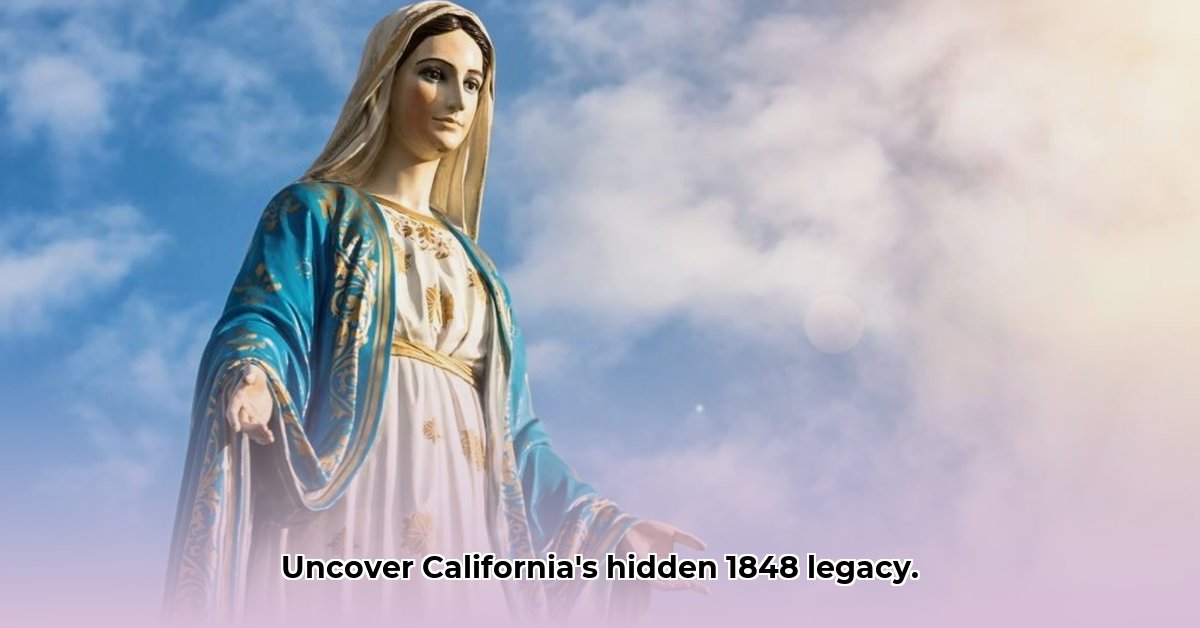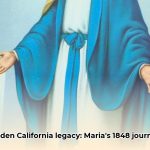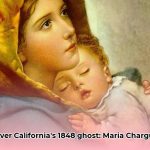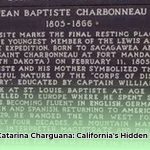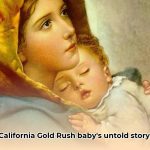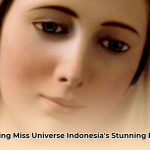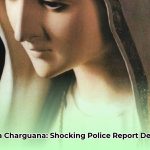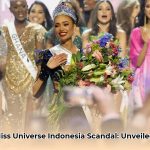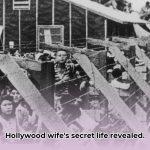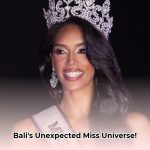Step back into 1848 California. Amidst the shift from Mexican to American rule and the burgeoning Gold Rush, Maria Catarina Charguana was born at Mission San Fernando. Her heritage—a blend of Luiseño, French-Canadian, and likely Shoshone through her paternal lineage—represents a captivating yet often overlooked aspect of California’s past. Much of her life remains a mystery, but by piecing together fragments of information, we can begin to understand her story and the broader experiences of Indigenous people during this transformative era. This article explores what we do know about Maria Catarina, acknowledges the gaps in our knowledge, and suggests avenues for future research, inviting you to join in uncovering her legacy. For more information, see her detailed profile.
Maria Catarina Charguana: A California Enigma Unfolds
The name Maria Catarina Charguana evokes a sense of history and cultural fusion. Born on May 4, 1848, at Mission San Fernando Rey de España, her life unfolded against a backdrop of immense change and upheaval in California. Reconstructing her story is like assembling a complex puzzle, one where many pieces are missing but the existing fragments offer tantalizing glimpses into a fascinating life.
A Life Shrouded in Mystery
Maria’s origins present immediate questions. Her father was Jean Baptiste Charbonneau, son of Sacagawea, the Shoshone woman known for her role in the Lewis and Clark expedition. Her mother, Margarita Sobin, was Luiseño. However, the absence of formal marriage records—a common occurrence for Indigenous unions during this period—raises questions about the precise nature of their relationship. Exploring these missing records, or lack thereof, provides insights into the challenges faced by Indigenous people in having their relationships recognized by external authorities.
The historical context further complicates matters. The subjugation and marginalization of California’s Indigenous population during the 19th century often resulted in incomplete or biased records, obscuring individual stories like Maria’s. This historical silence makes understanding her early life particularly challenging, requiring researchers to look beyond conventional sources and consider alternative narratives.
California in Turmoil: A Changing Landscape
Maria’s birth coincided with a pivotal period in California history. The Mexican-American War had just concluded, transferring control of California to the United States. The subsequent Gold Rush triggered a massive influx of settlers from around the globe, dramatically altering the region’s demographics and social dynamics. Imagine the profound impact of these events on Maria’s life and the Luiseño community.
The Gold Rush, while bringing prosperity to some, led to violence, displacement, and cultural disruption for many Indigenous peoples. Understanding Maria’s life requires acknowledging this broader context of dispossession and resilience. How did she navigate this rapidly changing world? What challenges and opportunities did she encounter? While the specific details of her experiences are largely unknown, exploring the historical context allows us to make informed inferences and appreciate the complexities of her life.
The Missing Years: A Search for Clues
After her baptism on May 28, 1848, Maria’s life fades from the readily available historical record. Did she marry? Did she have children? When and where did she die? These fundamental details remain elusive, highlighting the difficulties inherent in researching marginalized communities whose stories were often overlooked or excluded from official documentation.
The scarcity of information is not evidence of an insignificant life but rather a reflection of systemic biases within historical record-keeping practices. The search for these missing pieces highlights the importance of persistent and creative research methods. It also encourages us to critically examine the available sources, recognizing their limitations and potential biases.
Tracing a Complex Heritage
Maria’s ancestry represents a unique blend of cultures: Luiseño, French-Canadian, and likely Shoshone through her paternal lineage. This mixed heritage embodies California’s multicultural heritage, a tapestry woven from diverse threads. Fully understanding her life requires acknowledging and exploring these different cultural influences and their interplay within her lived experience.
Consider the challenges and opportunities presented by her mixed heritage. How did she reconcile these different cultural identities? What aspects of each culture did she embrace? By exploring these questions, we can gain a deeper appreciation for the complexities of her life and the broader experiences of individuals navigating cultural boundaries in 19th-century California.
The Path Forward: Uncovering Hidden Narratives
The limited information available on Maria Catarina Charguana presents both a challenge and an opportunity for researchers, historians, genealogists, and cultural institutions. Rediscovering the fragments of her life and bringing her story to light requires collaborative efforts and a commitment to inclusive historical practices.
| Stakeholder Group | Short-Term Goals (0-1 Year) | Long-Term Goals (3-5 Years) |
|---|---|---|
| Historians/Researchers | Systematically examine mission records, census data, and relevant archives, including Spanish-language sources. | Create interdisciplinary research projects that incorporate oral traditions, archaeological findings, and community knowledge; promote inclusive narratives. |
| Genealogists | Conduct extensive searches of genealogical databases, focusing on families with Luiseño, French-Canadian, or Shoshone heritage in Southern California. | Map Maria’s complete family tree and connect with living descendants; assist descendants in reclaiming their heritage and cultural identity. |
| Museums/Institutions | Develop exhibits that highlight the diverse experiences of Indigenous women in California during the 19th century; expand educational resources. | Establish long-term partnerships with Indigenous communities to ensure accurate and respectful representation of their history; develop programs that empower Indigenous youth to become historians and cultural stewards. |
The ongoing search to uncover her life underscores the critical importance of preserving and reinterpreting often-overlooked narratives of the past. The quest to understand her life acts as a reminder of how much is still to be learned about California’s rich and complex history, and the need to amplify the voices of those who have been historically marginalized. Her story, still largely unknown, deserves to be told, researched, and remembered.
Researching the Life of a Marginalized 19th-Century Indigenous Woman
Maria Catarina Charguana’s life, spanning the tumultuous 1840s and beyond in California, presents a case study for how to research the life of a marginalized 19th-century indigenous woman. Her mixed heritage—Luiseño, French Canadian, and Shoshone—complicates the already difficult task of reconstructing her story, requiring sensitivity and interdisciplinary methods.
Key Strategies:
- Acknowledge the limitations of existing historical records.
- Systematically explore diverse data sources.
- Critically evaluate sources for bias and perspective.
- Prioritize oral histories and family narratives.
- Collaborate with Indigenous communities ethically and respectfully.
Navigating the Maze of Historical Records
The first obstacle is the scarcity of documents directly focused on individuals like Maria Catarina. Official records often reflect dominant narratives, obscuring the experiences of marginalized communities. Could this scarcity mask hidden information waiting to be uncovered through creative exploration?
- Start with Known Facts: Begin with verifiable information about Maria Catarina, such as birth or baptismal records, census data, or mentions in letters or diaries. These fragments serve as anchors for further investigation.
- Expand the Search: Explore related records, such as land claims, legal disputes involving her family, or mission records pertaining to the Luiseño community. These tangential sources may reveal indirect details about her life.
- Consult Oral Histories: Seek out oral histories from family members, tribal elders, and community members. These narratives, passed down through generations, may contain invaluable insights into Maria Catarina’s life and the experiences of her community. Engage with these communities ethically, respecting their knowledge and protocols.
Deciphering Bias and Perspective
Finding information is only the beginning. Interpreting historical sources requires critical analysis. Were the records created by members of her community or by outsiders with potentially biased perspectives? Understanding these power dynamics is essential for avoiding misinterpretations. Consider the recorder’s agenda and how it might have shaped the information presented.
Ethical Collaboration and Indigenous Protocols
Successfully learning how to research the life of a marginalized 19th-century indigenous woman necessitates collaboration with Indigenous communities. It’s about recognizing their sovereignty and respecting their traditions, not just extracting information. This includes consulting with tribal historians, seeking permission before using any materials, and honoring their cultural protocols.
Reconstructing a Life from Fragments
By methodically piecing together fragments from multiple sources, we can begin to create a richer, more nuanced understanding of Maria Catarina’s life. While a complete picture may never be possible, we can bring her closer to being known and honored. Her legacy deserves no less.
Lola App – Maria Catarina Charguana
Unveiling Maria Catarina Charguana: Researching Indigenous Women in 19th Century California
Key Considerations:
- The research process faces significant Challenges in Researching Indigenous Women in 19th Century California.
- Limited historical records, biased perspectives, and the loss of cultural knowledge obscure their stories.
- Maria Catarina Charguana’s life highlights these difficulties in reconstructing the experiences of Indigenous women.
- Despite these challenges, fragments of information, such as mission records and oral histories, offer glimpses into their resilience.
- Further research requires utilizing diverse sources, questioning dominant narratives, and collaborating with Indigenous communities.
- Stunning Photos of Maria Catarina Charguana, Miss Universe Indonesia: Unveiling Her Beauty - July 23, 2025
- Uncover Maria Catarina Charguana Police Report Details:A Comprehensive Guide - July 23, 2025
- Miss Universe Indonesia 2023 Coronation Night Scandal:Abuse Allegations Spark Outrage - July 23, 2025
